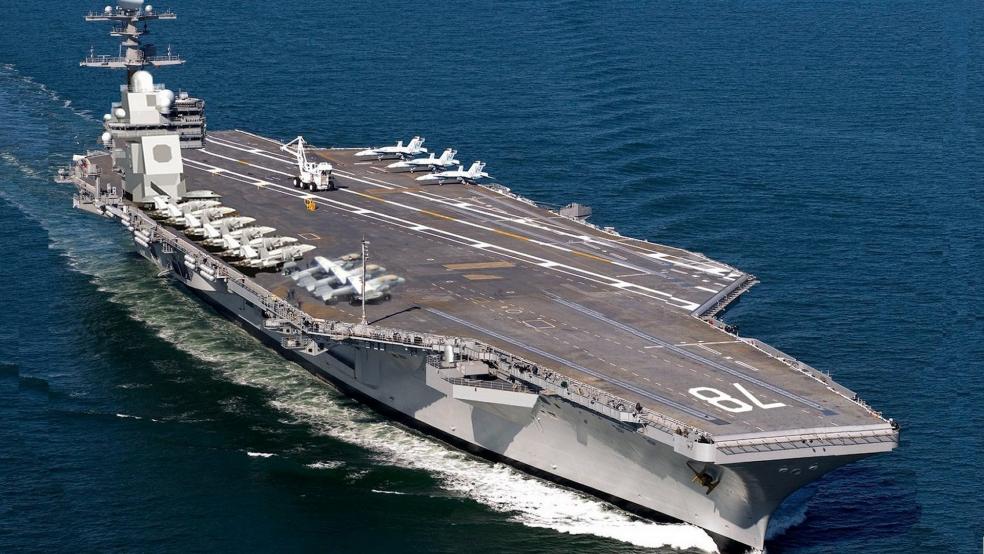Sometime this summer, the $12.9 billion aircraft carrier USS Gerald R. Ford – at $2.4 billion over budget, the most expensive piece of military hardware ever built for land, sea or air – will be commissioned.
Now a new report from the General Accounting Office maintains that if the Navy learned any lessons in the massive cost overruns on the Ford, it’s not applying them to the next nuclear-powered carrier being built, the USS John F. Kennedy. “As a result, the [cost] estimate does not demonstrate that the program can meet its $11.4 billion cost cap,” a GAO report released on Tuesday said.
Related: The Marines’ New Helicopter Costs as Much as an F-35
Technology, design and construction problems “coupled with an optimistic budget estimate” led to the overruns on the Ford, which was 12 years in the making, the GAO said.
Instead of factoring that experience into its projections for the Kennedy, the report said bluntly that the Navy “assumes a reduction in labor hours needed to construct the ship that is unprecedented in the past 50 years of aircraft carrier construction.”
Despite having warned for more than a decade of the Navy’s questionable optimism about the costs of constructing the Ford, the GAO said the risks of going over the caps set by Congress for the Kennedy are not being accurately captured.
Flawed and infrequent estimates mean Congress is forced to commit billions in ship funding before realistic costs are determined, according to the report, so there are “fewer opportunities to identify cost efficiencies or potential tradeoffs.”
For example, there was no independent review of the projected price tag for the Kennedy before Congress raised the cost cap from $8.1 billion to $11.5 billion in 2013.
Related: Why the Army Thinks It Needs a Bigger Bullet
The GAO does not expect the Navy to be able to build the next super carrier for $11.4 billion, the new cap put into place in 2016, because there is no built-in margin of error to account for production issues or delays. The expected delivery date for the Kennedy is 2022.
The Ford was scheduled to be completed in September 2015 but did not pass its sea trials until late May 2017, and while it has been accepted by the Navy, the official commissioning date still has not been set.
On the website of the Navy League, a private group that supports the Navy, Marines, Coast Guard and Merchant Marine, there is a three-day schedule of events surrounding the commissioning – but no specific dates.





